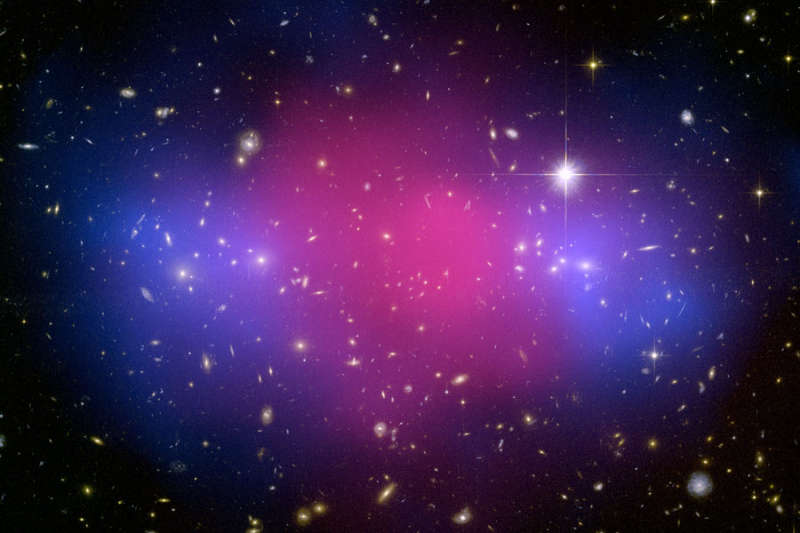Explanation: What happens when two of the largest objects in the universe collide? No one was quite sure, but the answer is giving clues to the nature of mysterious dark matter. In the case of MACSJ0025.4-1222, two huge clusters of galaxies have been found slowly colliding over hundreds of millions of years, and the result has been imaged by both the Hubble Space Telescope in visible light and the Chandra Space Telescope in X-ray light. Once the above visible image was recorded, the location and gravitational lens distortions of more distant galaxies by the newly combined galaxy cluster allowed astronomers to computationally determine what happened to the clusters' dark matter. The result indicates that this huge collision has caused the dark matter in the clusters to become partly separated from the normal matter, confirming earlier speculation. In the above combined image, dark matter is shown as the diffuse purple hue, while a smoothed depiction of the X-ray hot normal matter is shown in pink. MACSJ0025 contains hundreds of galaxies, spans about three million light years, and lies nearly six billion light years away (redshift 0.59) toward the constellation of Monster Whale (Cetus).
Note: Free
Astronomy Course Taught Online by an APOD Editor
1999 2000 2001 2002 2003 2004 2005 2006 2007 2008 2009 2010 2011 2012 2013 2014 2015 2016 2017 2018 2019 2020 2021 2022 2023 2024 2025 |
Январь Февраль Март Апрель Май Июнь Июль Август Сентябрь Октябрь Ноябрь Декабрь |
NASA Web Site Statements, Warnings, and Disclaimers
NASA Official: Jay Norris. Specific rights apply.
A service of: LHEA at NASA / GSFC
& Michigan Tech. U.
|
Публикации с ключевыми словами:
cluster of galaxies - dark matter - Скопление галактик - темная материя
Публикации со словами: cluster of galaxies - dark matter - Скопление галактик - темная материя | |
См. также:
Все публикации на ту же тему >> | |
